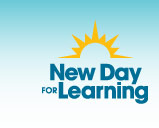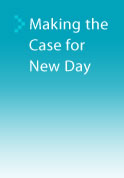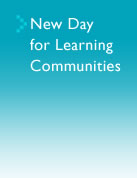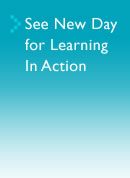


| > | About a New Day for Learning |
|
| > | Advisory Board | |
| > | Frequently Asked Questions | |
| > | About the C.S. Mott Foundation |
|
The opportunity to dramatically improve educational outcomes for all young people is here. With resolute political will from the statehouse to the White House, and new funding streams, such as the American Recovery and Reinvestment Act, it is possible for us to dramatically rethink the whole day for students so that learning experiences are seamless and unrestricted by walls, clocks or calendars.
New Day for Learning is not a curriculum or one-size fits all program; it's a 21st century vision for learning that builds on a foundation of core academics by leveraging community resources to incorporate strategies such as hands-on learning, working in teams and problem solving. Many programs that take place before the school day, after school and during the summer are already using these innovative learning approaches to engage students and increase their chances for success.
5 Elements of a New Day for Learning
Whether in an urban, suburban or rural areas, New Day for Learning:
Expands the definition of student success
Reading, math and science are critical to a solid educational foundation but must be bolstered by applied skills such as critical thinking, problem solving and teamwork. Beyond merely teaching students these skills, we must find ways to thoughtfully assess them to ensure that today's young people are fully prepared to succeed in school, work and life.
Uses research-based knowledge about how students learn best
Students cannot learn if they are not engaged. Educators and community stakeholders must use research-based knowledge about how students learn best to guide their programs and instruction.
Fosters collaboration across all sectors
To focus all resources on supporting academic and developmental goals for students, new collaborative structures must be built across sectors in communities and up and down government hierarchies. The involvement of community, business, civic and municipal leaders, parents and social service providers is vital to student success and pays economic, civic and social dividends to all.
Integrates various learning approaches and places
Engaging strategies that incorporate the arts, technology, service learning and apprenticeships can amplify core academic learning and provide students with opportunities for enriching their education and connecting it with the adult world that they will enter. Schools are just one of the many places in the community where learning and student success can happen.
Provides educators with new opportunities for leadership and professional development
While most current leadership development and certification programs are school-based, the importance of community-building skills is growing. Teachers and youth development staff can forge mutually beneficial partnerships that enhance their own skills and result in better outcomes for students.
 |
 |
 |
 |
 |
 |
 |